Gomo – Review
by Edward
|
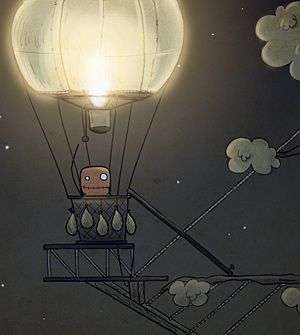 There’s something to be said for the dull, inevitable thud of inevitability. No matter how many times you watch Looney Tunes, Wile E Coyote will never catch the Road-Runner, and any attempts will end in him falling off a cliff, accompanied by “meep meep”. Thud. No matter how much you know reading the comments on a YouTube video will annoy you, you’ll still find something to rage at within the first minute. Thud. Someone you trust will let you down. Thud. You will play a bad videogame. Thud. This is a review about the latter.
There’s something to be said for the dull, inevitable thud of inevitability. No matter how many times you watch Looney Tunes, Wile E Coyote will never catch the Road-Runner, and any attempts will end in him falling off a cliff, accompanied by “meep meep”. Thud. No matter how much you know reading the comments on a YouTube video will annoy you, you’ll still find something to rage at within the first minute. Thud. Someone you trust will let you down. Thud. You will play a bad videogame. Thud. This is a review about the latter.
Bought to you by Fishcow Studios, Gomo is the story of a… thing, whose dog is kidnapped by aliens for… some reason, forcing our… hero(?) to traverse a bunker, another dimension(?) and space to retrieve him – such is the bond between a thing and its dog. There’s no further eloquence or subtext to the plot; you travel through a series of vaguely-connected locations to rescue Dingo, who, according to the Steam Trading Cards accompanying the game, is “a dog which is Gomo‘s best friend”[sic].
Eyebrows were raised further when I found that the action was stuck at a certain resolution, with no way to make it even bigger, leaving me with massive borders at all sides of the screen and no apparent methods available to make them disappear. That being said, Gomo doesn’t really aim for much with its art style either, and there’s not too much done with the limited real estate on offer. The kindest thing that can be said of the graphics is that they’re simplistic, backed up by a very faint but, nonetheless, present sense of charm. Less kind, however, would be to say that there’s no real sense of identity to the art in Gomo and, try as it might, the vast majority ends up being ultimately forgettable.
In a similar vein, the best thing I can say about the music is that it exists. Unfortunately, there are no stand-out tracks that stick in your head for days to come, and it doesn’t even earn the distinction of having songs that, while appropriate for the on-screen action, are soon dismissed and discarded. A jarring collection of what feel like badly-clipped thirty-second loops, the music in Gomo can be either borderline or actually full-on offensive to your eardrums. It wasn’t long before I found myself reaching for the mute button after the first loop, then leaving the command permanently affixed while I was playing, as even dead silence was more comforting.
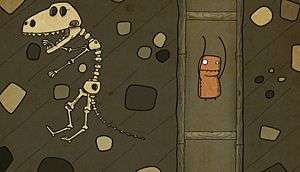 If opening impressions weren’t already so haphazard, more alarm bells rang when I attempted to control Gomo. For one, movement prompts only occur when you can sidle up to an interactive object, or off-screen, but never otherwise, which feels immediately jarring and isn’t something you’re likely to forgive or get used to before the end. The main consequence of this is that not only is it surprisingly constricting, but it makes puzzles far less involved as a result; there’s little wonder in a world where the only things you can touch are whatever helps you move onto the next room.
If opening impressions weren’t already so haphazard, more alarm bells rang when I attempted to control Gomo. For one, movement prompts only occur when you can sidle up to an interactive object, or off-screen, but never otherwise, which feels immediately jarring and isn’t something you’re likely to forgive or get used to before the end. The main consequence of this is that not only is it surprisingly constricting, but it makes puzzles far less involved as a result; there’s little wonder in a world where the only things you can touch are whatever helps you move onto the next room.
A second issue is that all of the animations are ploddingly, achingly slow; despite the short overall running time, I’m utterly convinced that half of it was spent watching Gomo slowly perform actions. There’s no way to skip sequences, and the ability to double-click and instantly find yourself in the next room is non-existent, meaning that every time you need your protagonist to do anything, you must first watch him scooch over with a pace that would make snails wince. Grabbing objects is just as tedious, as you have to watch Gomo‘s lines for arms move over, sluggishly pick up the item, then painstakingly pull down the zip in his back and insert it within himself. Every. Single. Time. Every animation feels like it’s half the speed it should be, and once it’s been demonstrated what happens to items once, it’s wholly unnecessary to show the process in every instance.
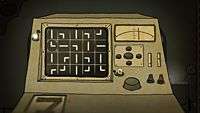 |
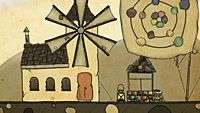 |
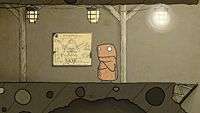 |
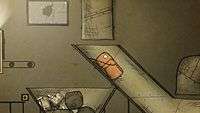 |
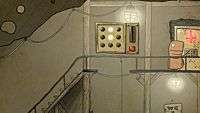 |
 |
Compounding the misery is the fact that hotspots are a lot smaller and finicky than they should be, often leading to pixel-hunting, and there’s no apparent option to reveal all of them in the area. This would have helped a lot with one puzzle towards the end, where an item needed was not only tiny, but blended in perfectly with the scenery around it to the point you could easily miss it, even if you knew what you were searching for.
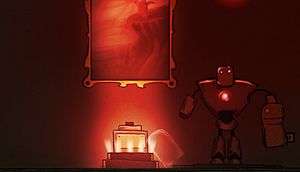 As mentioned earlier, the process of puzzle solving is somewhat streamlined thanks to Gomo‘s limited interactivity with the world, as the protagonist is unable to quip about or even acknowledge anything that isn’t directly related to progression. In addition, the grand majority of puzzles don’t require you to leave your current scenery in order to stumble upon the solution, so you’re trained that everything you need to solve the situation at hand is in the immediate area, every time. There’s no inherent issue with this, admittedly, but the actual problem comes from the puzzles themselves.
As mentioned earlier, the process of puzzle solving is somewhat streamlined thanks to Gomo‘s limited interactivity with the world, as the protagonist is unable to quip about or even acknowledge anything that isn’t directly related to progression. In addition, the grand majority of puzzles don’t require you to leave your current scenery in order to stumble upon the solution, so you’re trained that everything you need to solve the situation at hand is in the immediate area, every time. There’s no inherent issue with this, admittedly, but the actual problem comes from the puzzles themselves.
“Developer’s Logic” is an insult oft-slung at puzzles that have situations so ludicrous or out of left-field that it’s clear only those making it thought that the solution was, in any way, clear. It’s a slur that can be easily attributed to anything after the first third of this adventure. Add in the caveat that the solution is often in the same area, and some of them become positively banal. You need a code to open a door, so naturally the only way to find it is to shear a sheep tied to a balloon, then use a nearby telescope to look at the lettering as it floats away. To get past an electric fence, you need to arrange a stone circle on the wall of a windmill in accordance to the barely visible colours on the nearby well, which allows you to open up the building’s windows, and then, suddenly, there’s a snake for some reason.
To progress, you need to travel to another dimension and detonate a nuke that wipes out every side of a war, despite the fact that there are no obstacles explicitly stopping you from just walking past and never activating the portal. There’s nothing in your way, yet Gomo will refuse to let your story continue unless you commit genocide, with your actions having no relation on the rest of the adventure. There’s a carnivorous plant standing in your path and the only way to defeat it is to solve a sliding-block puzzle to open a paper bag with some herbicide spray inside. Gomo is a game where you can’t rip apart paper until you complete a sliding-block puzzle. A sliding-block puzzle. Come on.
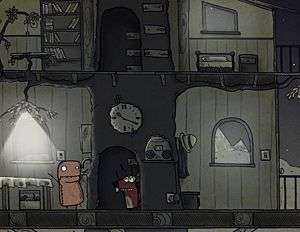 Puzzles vary from illogical, nonsensical and irritating to patronising and aggravating at the drop of a hat, but there’s also never a decent compromise or a moment where you feel like you’re actually enjoying yourself, not least because it’ll still take an age to solve, even if you know the answers, thanks to the cripplingly slow controls. Worse still is that there’s no real rhyme or reason to any of the puzzles, so the progression is thoroughly uneven and there’s never any consistent flow as to why one thing happens after another. There’s no coherency to anything that happens at all, so it just feels like a bunch of people who were working independently of one another shoved in a bunch of random puzzles and hoped they’d mesh, instead of forming a nightmare patchwork.
Puzzles vary from illogical, nonsensical and irritating to patronising and aggravating at the drop of a hat, but there’s also never a decent compromise or a moment where you feel like you’re actually enjoying yourself, not least because it’ll still take an age to solve, even if you know the answers, thanks to the cripplingly slow controls. Worse still is that there’s no real rhyme or reason to any of the puzzles, so the progression is thoroughly uneven and there’s never any consistent flow as to why one thing happens after another. There’s no coherency to anything that happens at all, so it just feels like a bunch of people who were working independently of one another shoved in a bunch of random puzzles and hoped they’d mesh, instead of forming a nightmare patchwork.
Yet, by far the most baffling thing is that Gomo feels like it takes an atomic age to reach the end of, despite the fact that I managed to reach the end-credits in seventy-nine minutes. Then, after a couple of hours had passed, I’d completely forgotten what had even happened for half of it. This is a title that is at once achingly slow, badly paced and far longer than it has any right to be, yet unable to sustain your attention for more than an hour and a half. This is an experience that manages to be both profoundly frustrating, irritatingly illogical, yet mostly forgettable. Even at six British Pounds Sterling, this feels ten too expensive. I don’t even think there’s much credit to the idea of playing it just to see how not to make a point-and-click. When the only noteworthy part of your game is the end-credits, something has gone horribly wrong – that thing is Gomo.
Pros- The credit sequence is the most novel thing about it
- At one point you fly out of a space worm's anus
- Often imprecise, regularly frustrating controls
- Puzzles range from hilariously bland to bewilderingly illogical, and never in-between
- I honestly don't understand half of what happened, no matter how hard I try
- It thinks it's a lot funnier than it actually is, but humour hardly ever lands and ends up being annoying as a result
- Pacing drags and it feels like it's gone on too long, despite it being shorter than the average film
- Jarringly slow animations when doing practically anything will grate before long
- Music is horrendously jarring, loops incessantly and openly dares you to mute it
- Feels too expensive, even at its low-budget asking price
- The credit sequence is the most novel thing about it
As much as I tried, I couldn't find anything to love in Gomo, an eighty-minute adventure that drags for an eternity, frustrates with illogical and patronising puzzles, and yet proves to be quite forgettable. It's too expensive, even at its low asking price, and although games are inherently ways to pass the time, I've rarely felt so conscious that I could have used that time for anything else in the world. That being said, I don't hate Gomo, I just don't find any of it noteworthy, fascinating or likeable in any way.
Gomo is but a walking shadow, a poor title that struts and frets an hour upon the stage and then is heard no more. It is a tale told by idiots, full of annoying music and frustrating puzzles, but signifying nothing.
Last five articles by Edward
- Best of 2015: Journey's End: A New Beginning
- Journey's End: A New Beginning
- You Can't Choose Your Happy Ending
- Okay, Let's Fix Comedy In Games - The V-Effekt
- Time Keeps On Smashing Away



















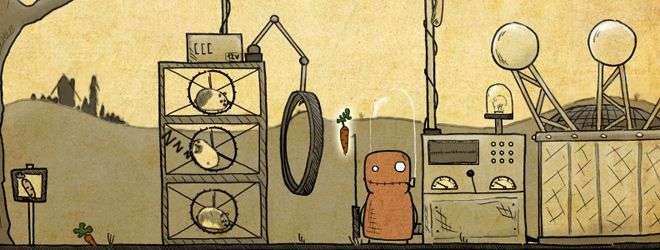
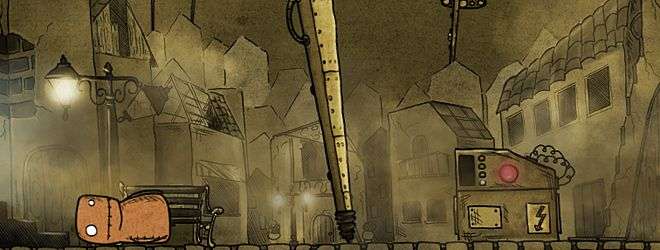






There are no comments, yet.
Why don’t you be the first? Come on, you know you want to!